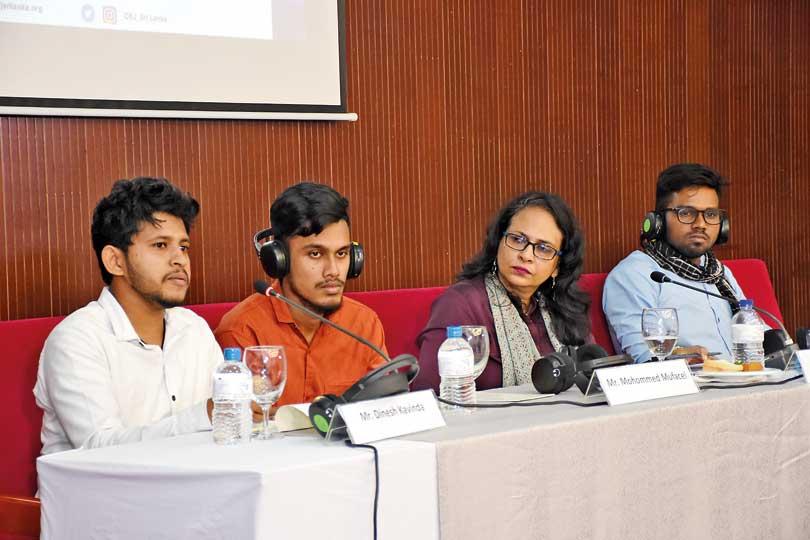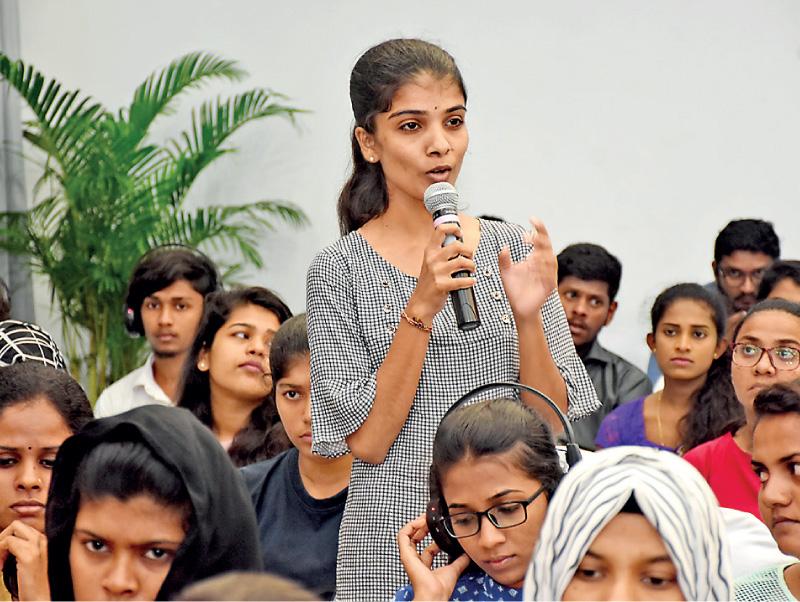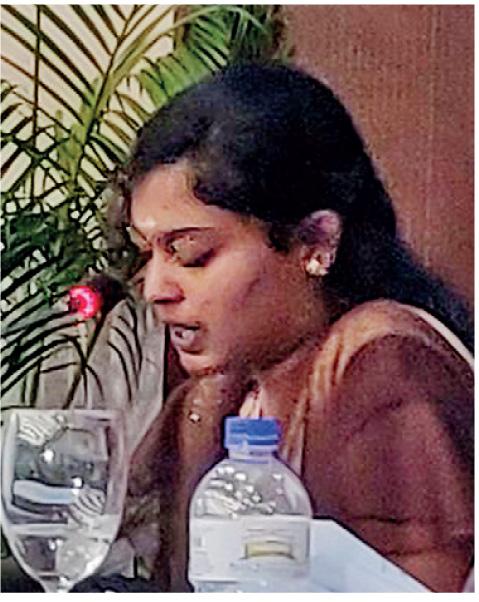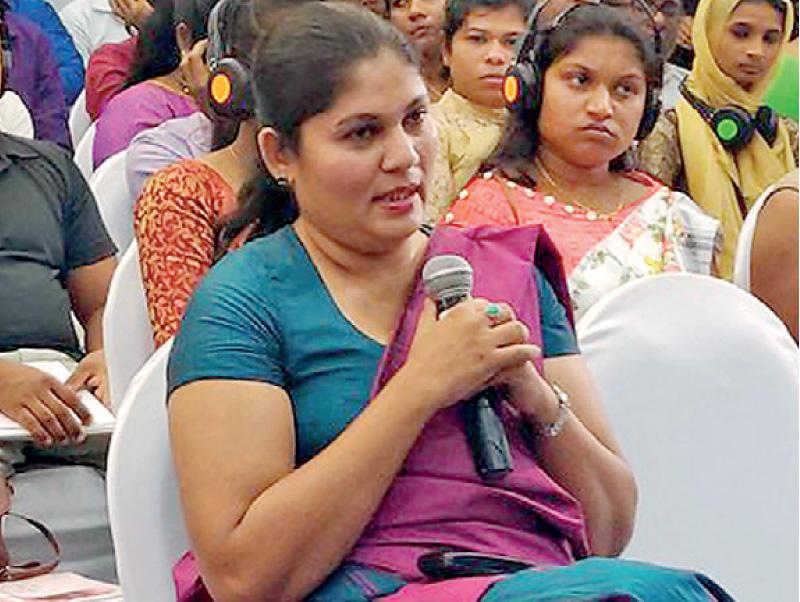Reply To:
Name - Reply Comment

Dinesh Kavinda from Moneragala district presents his ideas on Reconciliation process
 Sri Lanka has dealt with a three-decade long civil war, which has scarred people irrespective of ethnic differences. The collective memory of war is a haunting one. And those affected by war struggle have to cope with their experiences. But the idea of “reconciliation” has given people some hope in a post-war context. This vast topic cannot be easily defined or grasped due to its varying embedded connotations. In this backdrop, the Centre for Equality and Justice (CEJ) organised a dialogue on “Reconciling Sri Lanka” on November 26 to amplify the voices of youth and women regarding reconciliation. Moderated by Shyamala Gomez, Executive Director of CEJ, the space was open for youth and women who were considered crucial to the reconciliation process.
Sri Lanka has dealt with a three-decade long civil war, which has scarred people irrespective of ethnic differences. The collective memory of war is a haunting one. And those affected by war struggle have to cope with their experiences. But the idea of “reconciliation” has given people some hope in a post-war context. This vast topic cannot be easily defined or grasped due to its varying embedded connotations. In this backdrop, the Centre for Equality and Justice (CEJ) organised a dialogue on “Reconciling Sri Lanka” on November 26 to amplify the voices of youth and women regarding reconciliation. Moderated by Shyamala Gomez, Executive Director of CEJ, the space was open for youth and women who were considered crucial to the reconciliation process.
“Ethnic Minorities at village level need to be encouraged to integrate with others. Even the youth need to research the truth and not accept stories we hear from our own communities,” a youth participant from Monaragala, Dinesh Kavinda said. Kavinda also stressed the importance of teaching both Tamil and Sinhala languages as mandatory subjects in school. He said this would address the basic divisions that existed between Sinhala and Tamil speaking communities and added that knowing the language of a different culture allowed one to learn about and respect that culture.
Sharing her experiences as a displaced person from Jaffna, a youth activist from the Kelaniya University, Anojitha Sivaskaran said, “I knew Sinhala, Tamil and can manage to speak in English. So now I can interact and talk with people. I learned to share my experiences and I also give them time to share their experiences”. She stressed it was only through sharing each other’s experiences that people could understand those who belonged to a different ethnic community. “Real reconciliation can take place only if experiences are shared across various ethnic groups,” she said.

Anojitha Sivaskaran from Jaffna narrates her story as a displaced person
Balraj Tharshan from Vavuniya opined that youth had a special opportunity to share stories and ensure that real reconciliation took place. “Those of us from Vavuniya wore veshti today not to focus on our Tamil identity, but rather to show that we too are Sri Lankan,” he said.
Mohammed Mufacel from Trincomalee said he had begun questioning his parents’ views after speaking to members of other communities. Nabeel Marzook, a youth audience member said that labelling people as ‘racist’ was easy. But speaking to such people would help to understand that they are human, with similar concerns and insecurities. He insisted that to move forward one had to address these issues seriously.
 District Development Plans
District Development PlansThroughout the year, CEJ worked with youth groups from three districts - Trincomalee, Vavuniya and Moneragala - to improve their understanding of Sri Lanka’s history of conflict. The elders gathered at district-level meetings to share their perspectives and experiences of the conflict, while the youth had discussed solutions to move on from incidents of violence, both individually and collectively. After having discussions within their districts, the groups had continued their discussions with peers from other districts.
Jayaratanam Monisha represents Trincomalee district
Explaining the Office for National Unity and Reconciliation’s (ONUR) role in including youth perspectives in these District Development Plans (DDP), Deputy Director Sanduni Ariyawansa noted there were some fundamentals that needed to be addressed. “One is the need for improved capacity on languages and cultural understanding. To this end ONUR is working through its different sections like art and culture,” she said.
Jayaratnam Monisha from Trincomalee said more prominence must be given to reconciliation and friendship between youth of different ethnicities. A youth representative from Vavuniya, Thevarasa Thivakshan pointed out that it was necessary to have more youth representation in the development teams. “Decisions need to be taken in consultation with youth leaders who need to be identified. Tasks and work plans need to be completed in a timely manner,” he further stressed.
Speaking on the DDPs, a youth representative from Monaragala Madusha Harshani said, “As youth have varied interests and ideas we explored how they can give inputs when government officials gather feedback at village level.”
The dialogue ended with an emphasis on the necessity of the intervention of youth and women in the ongoing reconciliation process.

Sanduni Ariyawansa, Deputy Director, Office for National Unity and Reconciliation, clarifies ONUR role in Reconciliation process